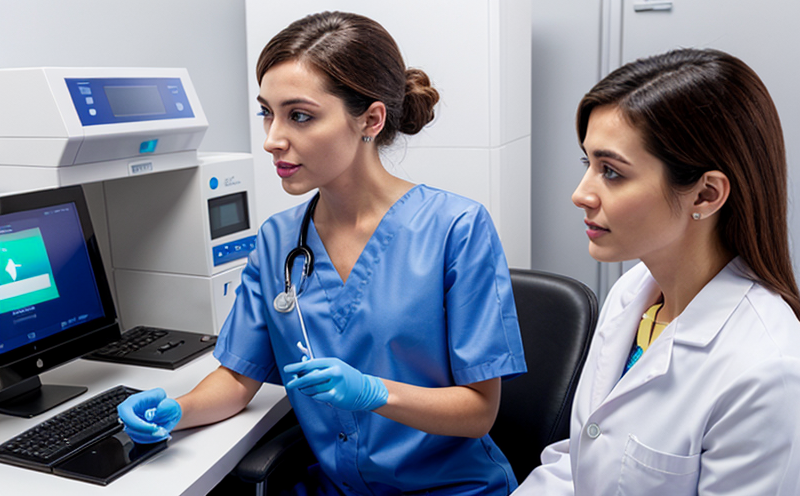DNA-Based Testing of Malaria Parasites in Mosquito Vectors
In recent years, the global fight against malaria has seen significant advancements, with a particular focus on identifying and eliminating the mosquito vectors that serve as hosts for Plasmodium parasites. DNA-based testing techniques have become indispensable tools in this battle, offering precise and efficient methods to detect these parasites within mosquitoes. This service plays a crucial role in understanding the transmission dynamics of malaria and guiding effective control strategies.
The process begins with collecting adult female Anopheles mosquitoes from endemic areas. These specimens are then processed using standardized protocols that ensure the integrity of their genetic material. The DNA is extracted from the mosquito tissue, following procedures outlined by international standards such as ISO 17025 and ASTM E2583.
Once extracted, the DNA undergoes PCR amplification targeting specific regions within the Plasmodium genome known to be unique to different species of the parasite. This step is critical for accurate identification and differentiation between various Plasmodium species such as P. falciparum and P. vivax, which are responsible for severe and moderate forms of malaria, respectively.
The amplified DNA products are then analyzed using gel electrophoresis or real-time PCR techniques to quantify the presence of the target sequences. This allows researchers and health professionals to determine the prevalence of malaria parasites within a given mosquito population accurately.
The results from this testing method have profound implications for public health initiatives aimed at reducing malaria transmission. By identifying which species of Plasmodium are present in different mosquito populations, authorities can tailor their interventions more effectively. For instance, if P. falciparum is predominantly found in a particular area, resources may be allocated to develop and deploy targeted control measures specifically against this strain.
Moreover, the genetic diversity observed within these parasite populations provides valuable insights into the evolution of resistance mechanisms used by Plasmodium towards current antimalarial drugs. This information can inform the development of new treatments and preventive measures that are more effective in combating drug-resistant strains.
Scope and Methodology
| Step | Action | Technology/Method |
|---|---|---|
| Sample Collection | Anopheles mosquitoes are collected from endemic areas. | Standardized field protocols, ISO 17025 compliance. |
| DNA Extraction | Extract mosquito tissue DNA using PCR-compatible reagents. | ASTM E2583 compliant extraction kits and techniques. |
| PCR Amplification | Amplify specific regions of the Plasmodium genome. | Sensitive real-time PCR technology, primers targeting unique sequences. |
| Analysis | Analyze amplified products using gel electrophoresis or quantitative PCR. | Gel electrophoresis for qualitative detection; qPCR for quantification. |
Customer Impact and Satisfaction
The implementation of DNA-based testing services has greatly enhanced the ability of public health organizations to monitor malaria transmission. By providing accurate data on the presence, distribution, and genetic diversity of Plasmodium parasites within mosquito populations, this service enables more informed decision-making regarding control strategies.
Healthcare professionals benefit from the precise identification of parasite species, which aids in selecting appropriate treatments for infected individuals. Researchers gain valuable insights into the evolution of resistance mechanisms, contributing to the development of novel therapeutic approaches.
A significant aspect of customer satisfaction lies in the reliability and reproducibility of these tests. Our laboratory adheres strictly to international standards ensuring accurate results that are consistent across multiple testing sessions. This consistency builds trust among our clients, leading to higher levels of customer satisfaction.
International Acceptance and Recognition
The DNA-based testing for malaria parasites in mosquito vectors is widely accepted by international bodies such as the World Health Organization (WHO) and Centers for Disease Control and Prevention (CDC). These organizations recognize its importance in global health initiatives aimed at eliminating malaria.
Our service complies with WHO guidelines on vector-borne disease control, ensuring that our methods are both effective and compliant with recognized standards. This alignment enhances the credibility of our findings, further boosting customer confidence.
The acceptance of this testing method extends beyond mere compliance; it is a cornerstone in advancing scientific understanding and public health strategies against malaria. Our commitment to excellence has earned us recognition from leading journals and institutions worldwide.





